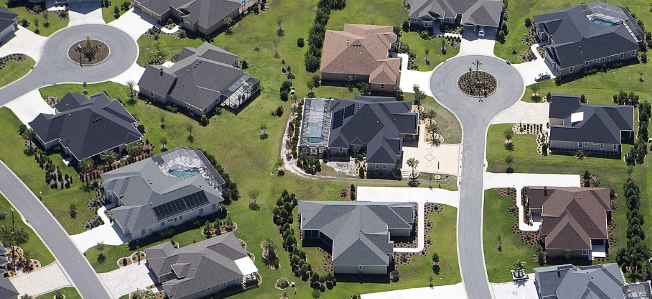US Census Political Gains for Republicans Could End Up Benefiting Democrats

By Dora Mekouar
New U.S. Census figures show a population shift that could have national political ramifications during this decade.
Fifty years ago, fewer than half of all U.S. residents — 48% — lived in the so-called Sun Belt region in the southern and western parts of the United States. Today, 62% of people in America live in the Sun Belt, according to the latest numbers from the Census Bureau, which tracks the U.S. population.
The Sun Belt generally comprises warmer southern and western states including Alabama, Arizona, Arkansas, California, Florida, Georgia, Louisiana, Mississippi, Nevada, New Mexico, North Carolina, Oklahoma, South Carolina, Tennessee and Texas.
The biggest draws in the Sun Belt used to be California in the West, and Texas and Florida in the South. But that’s changing.
“Some of that growth has moved to the interior part of the Sun Belt,” says demographer William Frey, a senior fellow at the Brookings Institution. “So, we see fast growth rates in states like Nevada and Arizona. And in the South, states like Georgia, North Carolina.”
These population shifts mean that seven seats in the House of Representatives — where seats are divvied up according to population — will also be changing. For the first time ever, California is losing a seat, while Florida, Colorado, Montana, Oregon and North Carolina are all gaining one and Texas is adding two.
In addition to Democratic stronghold California, other states that will lose a seat in Congress are Illinois, Michigan, New York, Ohio, Pennsylvania and West Virginia, most of which are either Democratic-leaning or battleground states.
Much of the Sun Belt traditionally votes Republican, but any sense of triumph felt by political strategists could be short-lived.
“People who voted for Democrats in the past are now moving to the Sun Belt and making those states a little less politically strong for Republicans,” Frey says. “We’ve already seen, in the last presidential election, that the state of Arizona and the state of Georgia, two states that have voted Republican in presidential elections for a very long time, voted for Joe Biden, the Democrat, this time, and a good reason for that is because of the changing nature of the demographics.”
It’s a pattern that Frey expects will continue and which could have an impact on future presidential elections.
“Some of those states are eventually, and probably soon, going to be Democratic leaning … because of the nature of the people who move there may be voting Democratic,” Frey says. “From the Electoral College standpoint, it’s a very near-term gain for Republicans, but probably a long-term gain for Democrats.”
The census numbers also point to another potential issue that America’s leaders and politicians will have to tackle. Overall, the U.S. population is growing at its slowest rate in almost a century — since the Great Depression of the 1930s. And that could put the squeeze on America’s younger generations.
“Stagnant population growth is something we’ve not had a lot of experience with in our history,” Frey says. “The older population is going to be even a bigger burden on the younger working-age population, who are going to need to provide them with social security or retirement income, with medical care from the government, because it’s that younger working-age population who pays the taxes that supports that older population.”